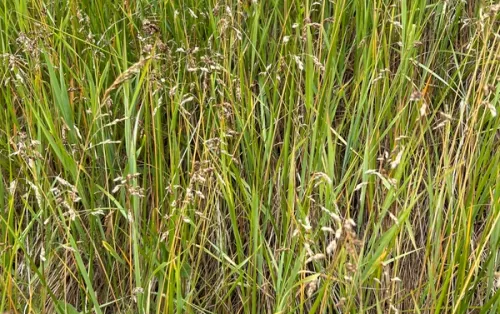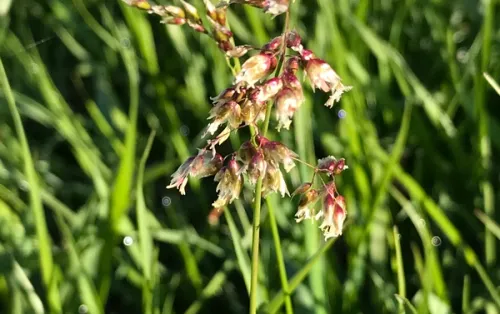Northern Sweetgrass
Sweetgrass is a perennial, cool-season grass known for its fragrant leaves and cultural significance. It forms low, arching clumps of glossy green blades that grow 1 to 2 feet tall and emit a distinctive sweet, vanilla-like aroma when crushed or dried. In early summer, it produces delicate flower panicles that wave gently above the foliage, adding a soft, textural element to the landscape.
Often found in moist prairies, streambanks, and open woodlands, Sweetgrass thrives in full sun to part shade and moist, well-drained soils. It spreads steadily via shallow rhizomes, forming fragrant mats that help stabilize soil, suppress weeds, and provide nesting materials for birds and small mammals. Sweetgrass is traditionally used in braiding, ceremonies, and basketry by many Indigenous peoples and is revered for its spiritual and ecological value.
Details
Range Map
Ecological Benefits
Maintenance Tips
- Prefers moist soil but is somewhat drought-tolerant once established.
- Cut back old foliage in early spring to make room for fresh, vigorous growth.
- Best in moist, rich soils but adapts to a range of conditions as long as drainage is good.
- Mulch lightly to retain moisture and suppress weeds.
- Divide clumps every few years in spring to rejuvenate growth and manage spread. Allow space for rhizomes to expand.





